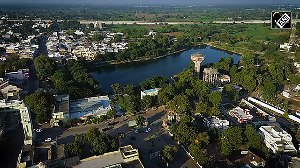 Disappointed by the Rangarajan committee report on gas pricing, BP Plc, Europe’s second-biggest oil company, has suggested a three-pronged alternative pricing system to the government.
Disappointed by the Rangarajan committee report on gas pricing, BP Plc, Europe’s second-biggest oil company, has suggested a three-pronged alternative pricing system to the government.
Group CEO Robert Dudley has, in a submission to Prime Minister Manmohan Singh, also said his company’s board of directors could meet in India next month to see for themselves “the challenges and opportunities”, before they approved additional India investment.
On Monday, Dudley, along with Reliance Industries Ltd Chairman Mukesh Ambani, had met Singh and Planning Commission Deputy Chairman Montek Singh Ahluwalia to seek “clarity on pricing of natural gas from April next year”.
BP did not confirm the suggestions made. But it is understood to have suggested in a note to Singh a transition towards an “arms-length, market-determined” pricing mechanism for liquefied natural gas over a three-year period.
During this period, it suggested an additional price incentive of $1.5 per million British thermal unit (mBtu) be given to meet the high cost and exploration risks of deep-water
It also sought a schedule of quarterly increase over a three-year period for the industry.
The current price, at $4.2 an mBtu, is due for revision from April 2014.
The formula proposed by the Rangarajan panel works out a natural gas price of around $8 an mBtu.
BP has already lined up investments worth about $7.2 billion in India after joining hands with RIL for exploration and production of oil and gas in deepwater blocks.
In February, the company’s India head, Sashi K Mukundan, had also written to the Prime Minister’s Office over the pricing issue after BP and RIL announced investments of over $5 billion over the next three-five years in the KG-D6 block to develop around four trillion cubic feet of discovered natural gas reserves.
The letter had said: “new production will come only from existing producing fields, associated gas and onshore/shallow water gas”.
In the discussions, BP said if the government implemented market-based pricing, it would reduce India’s dependence on gas imports.
“Such a shift could move India from 25 per cent to 75 per cent self-sufficiency by 2025,” it said.











